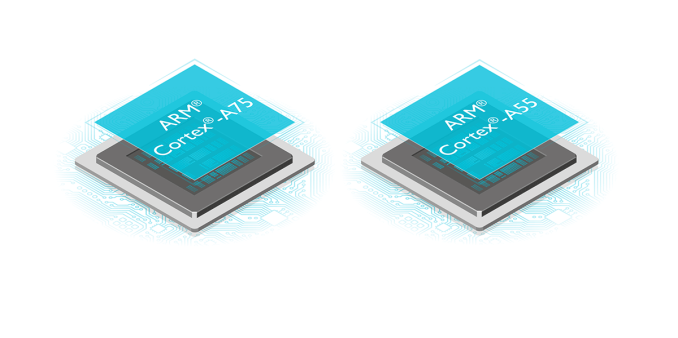SoftBank-owned British semiconductor company, ARM, has unveiled its Cortex-A75 and other CPUs and GPUs for 2017. Of note is the fact that the unveiling comes on the eve of Computex, the computer expo held in Taiwan where OEMs will be showcasing their implementations of Intel’s new silicon.
Also launched today were the Cortex-A55 and the Mali-G72, basically all organic upgrades from their earlier iterations. What’s significant about this year’s lineup, though, is that they are purpose-built for mobile AI and machine learning tasks, as well as suited for augmented reality and mixed reality applications.
To understand the significance of this, we need to understand ARM’s impact on the mobile industry. Almost every major mobile processor found on today’s smartphones is based on ARM’s processor architecture and instruction sets. Qualcomm, Samsung and Apple all use ARM’s design blueprints for their own chipsets, so anything ARM does on the design front is critical to the entire mobile industry.
That brings us to the new DynamIQ CPU branding that ARM is using for its CPUs this year. DynamIQ is essentially a more flexible set of design choices for silicon vendors, allowing them to pair clusters of CPUs in various combinations. While previously, only a matching number of A7x CPUs could be paired with a cluster of A5x CPUs, DynamIQ now allows any combination of the two clusters up to a total of 8 CPUs
For example, a silicon vendor can have a single A75 CPU combined with seven A55s for a total of either. That means the big CPU is available for intensive single-threaded performance, while the rest can contribute to a much longer battery life and lower overall costs for the devices in which they are used.
The biggest reason for this flexibility is to give smartphone chip makers the kind of choices they need based on the type of device that their chips are going to power, so this is a major change from earlier years.
And the fact that they’ve unveiled their DynamIQ CPUs as well as the Mali-G72 GPU ahead of PC manufacturers, who will be showcasing their PC implementations of Intel’s processors at Computex in Taiwan, is a significant point to note.
Thus far, Intel has been dominant in the clamshell laptop segment, and that’s what ARM wants to take a crack at. Much of that revolves around the Windows 10 on ARM effort by Microsoft and Qualcomm. By pushing the Cortex-A75 to 2W of power consumption, ARM is able to achieve a 30 percent performance increase on chips that use this core. And the flexibility of clustering will ensure that the chips made based on this design change will be suitable for both mobile devices and what ARM considers to be “Large Screen” devices, which are basically laptops.
In fact, about a year and a half ago, ARM launched its Large Screen Compute division, expressly for the purpose of focusing on this particular market segment.
So, when are new devices based on the DynamIQ design going to hit the market? Realistically, the first quarter of 2018, says ARM. Manufacturers have had access to the new designs from the end of last year, and most of them will have their products ready for an early 2018 launch. However, Chinese manufacturers could implement these design much faster on their own chipsets, at the rate of “China speed,” which means we could see the new ARM design on smartphone chips as soon as the end of 2017.
Coincidentally, it’s also possible that, around this time, we will see the new Windows mobile device from Microsoft running Qualcomm’s Windows 10 on ARM, which Qualcomm’s CEO said would be coming in the fourth quarter.
Thanks for visiting! Would you do us a favor? If you think it’s worth a few seconds, please like our Facebook page and follow us on Twitter. It would mean a lot to us. Thank you.
Source: The Verge



